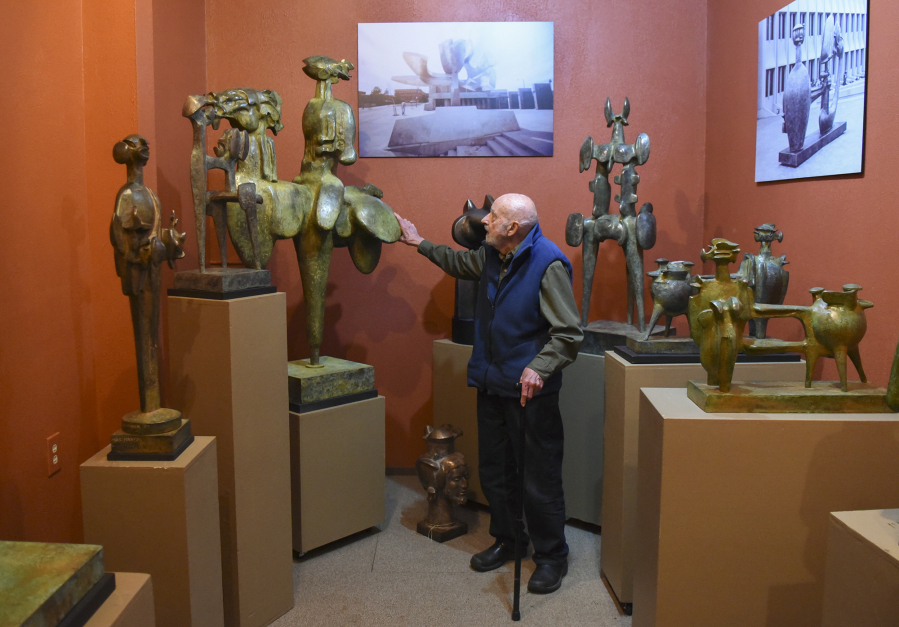DAYBREAK — James Lee Hansen is finishing things up. He’s not starting any new sculptures these days, he said, but he is striving to complete decades-old pieces that were left undone.
Fortunately, the renowned sculptor keeps liking most everything he started, once upon a time. Only rarely, he said, does he find leftovers that he just wants to destroy.
Hansen has no taste for waste. His character was forged during a time of extreme scarcity and worldwide destruction, his wife, Jane, pointed out, and his generation became a cohort of “great scroungers, greatly creative and inventive minds. In this time of devastation, they were about making something real. If you did that, people really noticed.”
Jane sure noticed; she married two such men. First was Harvey Jack Lucas, a painting conservator and longtime friend of sculptor James Hansen and his first wife, Annie. After Harvey and Annie both died, in the early 1990s, James and Jane paired up. That was in 1994; since then, Jane has devoted herself to her second husband’s life and legacy.




